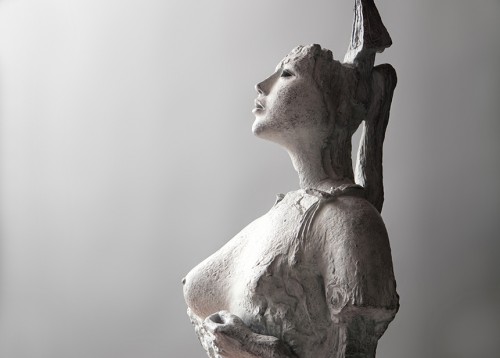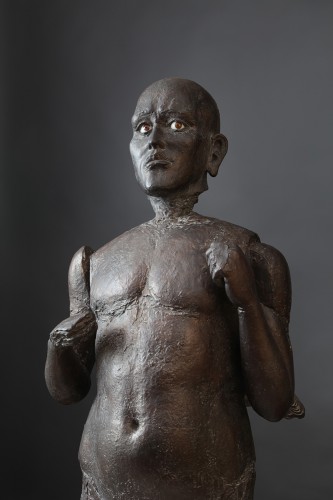企画展
Munehide Hosokawa, Sculptor The Beauty of Being Human
| Term |
October 07(Sat),2017 〜
November 26(Sun),2017
Closed Days:Mondays (first following weekday if Monday is a public holiday) Opening Hours:9:00~17:00(Admission is until 16:30) |
|---|---|
| Exhibition Hall | |
| Admission Fee | Adult: 1,000 yen
You can see a collection exhibition with the ticket of a plan exhibition.(Excluding some exhibitions) |

What is sculpture? This exhibiton looks at the works of Munehide Hosokawa (1930-94), who kept asking this question as he explored the human condition.
Hosokawa was born in Matsumoto, grew up in Suwa, and studied in the Sculpture department of the Tokyo University of the Arts where he exhibited and his talent was recognised early. After influence from the Western art prevalent in Japan in the 1950s and early 60s, he returned to Japanese imagery for his series of ancient ornaments, for which he received the 8th Takamura Kotaro Prize. In 1968 he was among the artists to be sent overseas by the Agency for Cultural Affairs, and in Mexico his exposure to the Mayan civilization gave him confidence to pursue his own scultpure. Upon his return to Japan he carved away to revealed the naked human interior in the Man and Woman series, and the King and Queen series. He took ideas from medieval Kamakura and Muromachi period Chinzo sculptures for Zen Master Dogen, and from the later Heian period for the Hell Scroll and Ghost Scroll series of three-dimensional renditions of narrative paintings. In pursuit of his art, he chipped away at the weathered objects and people to transcend time and history.
In this exhibition, we show around 90 works, including sculptures and sketches, following Hosokawa’s development over his entire career. We hope these will live on as evidence of human tenacity, showing the naked beauty that Hosokawa put into his sculpture, and the struggle of life against its inevitable fate. We also hope that you will find messages among Hosokawa’s sculptures.
We would like to thank the many people who have made this exhibition possible, in particular Akiko Hosokawa and everyone at Suwa City Museum of Art for letting us show items from their precious collection.
Matsumoto City Museum of Art









